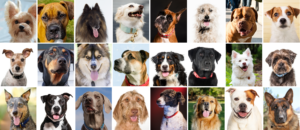National Canine Research Council Summary and Analysis:
This, and the other two papers produced by the same parent survey (Guy et al., 2001a; 2001c), is included because it probably represents the least sample bias of any large scale survey of dogs and owners. As the second of the authors’ three-paper series on dog bites, the purpose of this matching study was to identify canine behaviors and characteristics of 227 dogs involved in bite incidents that might be risk factors for biting. Clients of 20 veterinary practices in New Brunswick, Nova Scotia, and Prince Edward Island, Canada administered surveys to their dog-owning clientele, (Guy et al., 2001a) which resulted in an 81.4% response rate and the initial pool of 3,226 dogs for this series of studies. From the initial pool this study population of 227 dogs was extracted, limited to those whose owners had reported that the dog had bitten a family member according to a precise definition of a bite as “The upper or lower teeth making contact with the victim’s skin with sufficient pressure to cause a visible injury such as an indentation, welt, scrape, bruise, puncture, or tear in the skin.” Those dogs were matched with a group of 126 non-biting dogs from the same survey pool. A major strength of this study was the inclusion of a control population. Unlike previous studies which either a) only examined dogs who had bitten or b) used different sources for obtaining biting and non-biting dogs, this study used the same source and was able to produce a control sample. The only potential selection biases were that all participants had taken their dog to a veterinarian and all the dogs were at least 6 months old, so it is possible that some young dogs who had expressed biting behavior had been removed from the population. Again, the response rate was very high (80.5%) and interviews were completed with 515 dog owners, among 640 selected subjects, 9.1% of the non-responses were due to the person no longer owning the dog, which had no correlation to whether or not the dog had been recorded as a biter in the Guy et al. (2001a) original survey.
From among the original >500 owners who had responded to the first questionnaire (Guy et al., 2001a) that their dogs had bitten a family member, 227 were identified through a rigorous interview process as having dogs who had actually bitten. They were matched with 126 controls, some of whom had growled at family members, but who had not bitten. (See Guy et al. (2001a) for details of the parent study.) Interviews revealed that many of the “biters” were not, in fact, biters, but instead had exhibited “mouthing behavior.” The matching procedure was adjusted to account for this.
The results showed that dogs who had bitten were on average younger and weighed less than non-biting dogs. Risk factors for biting behavior included the dog being female, the presence of teenagers in the home, history of a treatment for a skin disorder, a high excitability ranking and aggression over food and/or sleeping in the owner’s bed, in the first 2 months of ownership. The data revealed an interaction between size and other factors, with small female dogs the group most likely to bite along with dogs being treated for skin infections. This could suggest a relationship between size and reactivity, or it could reflect increased owner tolerance of biting in smaller dogs. Fear predicted biting behavior with biting dogs more likely to show fear towards men, children, and strangers.
It is important to note that causal relationships cannot be drawn from these correlational lifestyle findings here as there could be additional lurking variables. For example, size was a confound for sleeping on a family members’ bed. When size was controlled for, sleeping on the bed was no longer a significant predictor of biting behavior. Regardless, these risk factors lay groundwork for future research and do clearly indicate that the dog’s environment plays a large role in biting behavior. And other confounds are possible. For example, the authors note that owners may be more likely to relinquish a large biting dog than a small one, potentially affecting the finding that small dogs bit more. Likewise, whether the owner’s identification of a puppy as “excitable” is a matter of subjective perception, or an actual personality variable, such a report or the part of an owner can offer an opportunity for a professional to intervene with appropriate behavioral advice.
In this study, all dog bites were grouped together; the authors did not distinguish between injurious and non-injurious bites. This limits the study’s usefulness as a means to develop prevention strategies for injurious bites, making it difficult to meaningfully utilize the data. The confusion their participants had in discriminating between playful mouthing behavior and actual bite incidents presents an analogy. That misunderstanding underscores the importance of carefully defining and explaining bite-related terminology and determining what kind of behavior actually results in harm.





